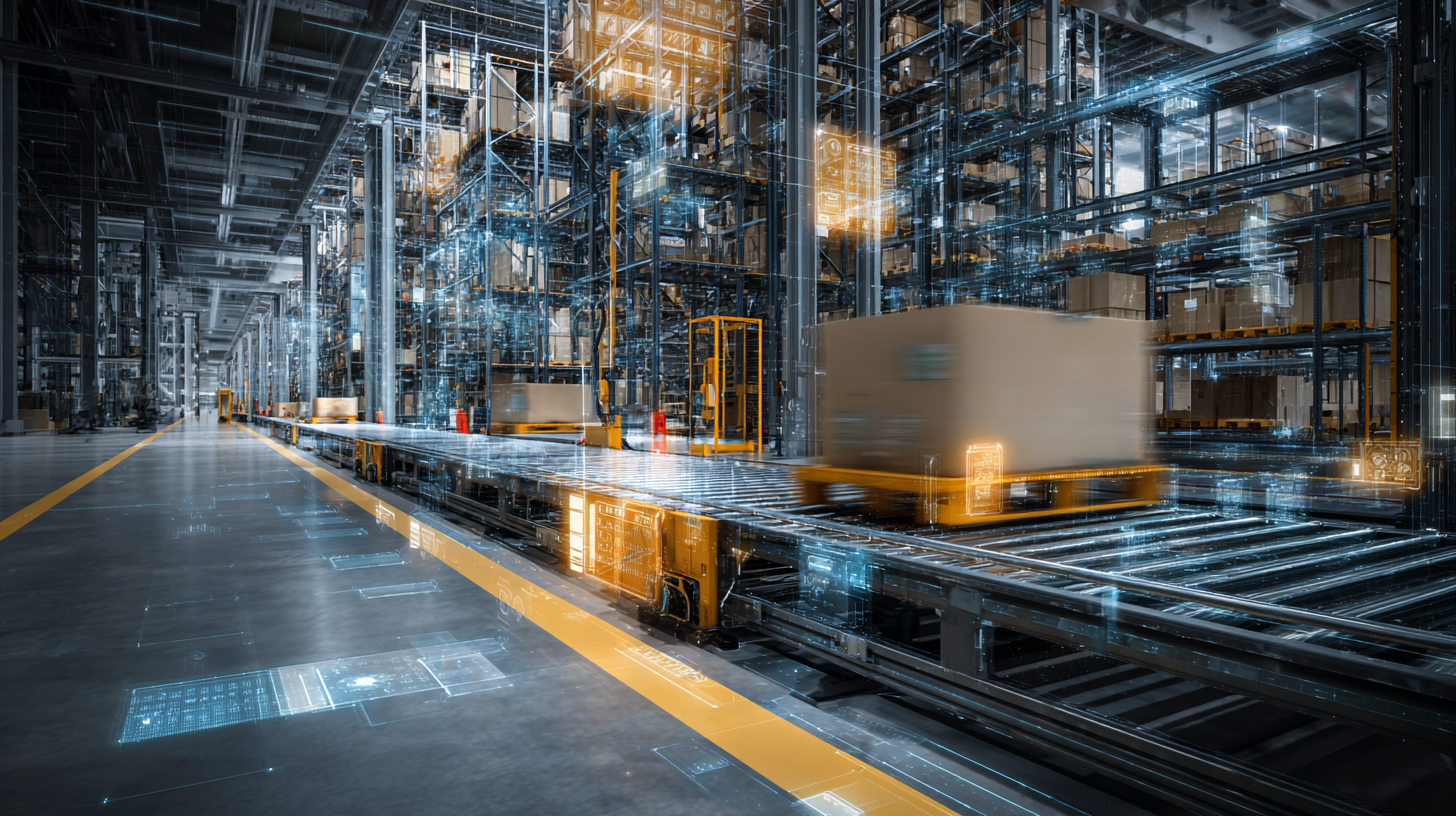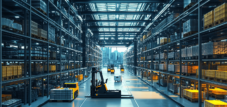
The new benchmark for intralogistics: How Toyota is redefining the rules of the game in the automated logistics market with TALG – Image: Xpert.Digital
Accelerators for Industry 4.0? Perspectives, challenges and the open future of TALG
Toyota Automated Logistics: The merger as a paradigm shift in global intralogistics
A new era of intralogistics – The background of the merger
The recent consolidation of Toyota's intralogistics divisions—Vanderlande, Bastian Solutions, and viastore—into the new global brand "Toyota Automated Logistics Group (TALG)" marks a strategic turning point in the industry. While this merger was long anticipated by many market observers, its speed is particularly surprising: Following the successful merger and brand alignment of Bastian Solutions and viastore in North America, the integration now extends to a unified global identity—a milestone that underscores the company's ambition to exert a dominant influence on the development of automated logistics systems in the coming decade. The new conglomerate combines the expertise of regional market leaders, consolidates know-how in the automation of warehouses, distribution centers, parcel and air freight logistics, and represents a new order of magnitude in global competition. With a combined sales volume exceeding 3 billion US dollars, TALG is scaling to a size that addresses numerous industrial value creation stages, covering all core segments from planning and hardware integration to digitized control and analysis functions.
The global powerhouse – How Toyota is forging a new identity for intralogistics with TALG
The context: Market trends, digitalization and the growing need for automation
The intralogistics market is growing dynamically, driven by factors such as the e-commerce boom, the automotive industry, labor shortages, and the ongoing pursuit of efficiency and transparency. Experts predict that the global volume of the industry will increase from approximately USD 63 billion in 2024 to around USD 112 billion by 2030, representing an annual growth rate of approximately 9.4 percent. The increasing connectivity and digitalization through robots, AI, and IoT is setting new standards: Automated warehousing, real-time monitoring, and intelligent control systems are becoming crucial levers for ensuring competitiveness and making operations more resilient and flexible. Automated storage systems, autonomous transport vehicles, and cloud-based control and maintenance platforms are transforming traditional production and distribution processes. For TALG, this dynamic of progress is not just a market opportunity, but an obligation. The technological pluralism of individual brands can now be consolidated within a unified system logic and replicated globally, thereby opening up new avenues for innovation.
Intralogistics under digital pressure – How automation, AI and IoT are revolutionizing the market
The strategy behind TALG: Synergy, economies of scale and individual market access
The merger to form TALG is more than just a brand integration: it represents a profound strategic realignment on a global scale. One aim is to leverage synergies in product development, customer support, and sales strategies more efficiently. The individual subsidiaries – Vanderlande, Bastian Solutions, viastore, and Toyota L&F – each brought their own strengths to the table: Vanderlande as a specialist in airport and parcel logistics, Bastian Solutions and viastore with their expertise in intralogistics system integration, material flow, and automation technology, and Toyota L&F as a supplier of industrial trucks and equipment. This integration will allow for the pooling of internal know-how resources, the expansion of portfolios, the minimization of overlaps, and the optimization of market access. Another goal is to secure regional independence while simultaneously benefiting from central innovation, research and development capacities: In Europe, the Vanderlande and viastore businesses are merging to form “Toyota Automated Logistics Europe”, while in the USA, Bastian Solutions and Vanderlande's American activities are being integrated into “Toyota Automated Logistics United States”.
Synergy as a formula for success? Opportunities and risks of the new Toyota ecosystem
Challenges of integration – culture, processes and technology
The structured integration of four established organizations is a massive transformation undertaking. Differing corporate cultures, business models, IT and data architectures, as well as complex regulatory requirements, particularly in Europe and the USA, must be harmonized. The challenge lies less in the technical merger itself, but rather in the sustainable establishment of a shared identity and a coherent product and service offering. Experience from previous M&A projects shows that, in addition to process optimization and synergy effects, such mergers require a high degree of change management, leadership skills, and strong communication to overcome resistance and integrate internal experts. Specifically in the case of TALG, it is crucial to ensure that regional market requirements are not leveled by global standardization, but rather that local innovation and customer proximity are preserved. The integration of IT infrastructures, the harmonization of hardware platforms and software solutions (e.g., warehouse management systems, real-time tracking), and the management of data security and cyber risks are further critical aspects that accompany the consolidation project.
Our global industry and economic expertise in business development, sales and marketing
Our global industry and business expertise in business development, sales and marketing - Image: Xpert.Digital
Industry focus: B2B, digitalization (from AI to XR), mechanical engineering, logistics, renewable energies and industry
More about it here:
A topic hub with insights and expertise:
- Knowledge platform on the global and regional economy, innovation and industry-specific trends
- Collection of analyses, impulses and background information from our focus areas
- A place for expertise and information on current developments in business and technology
- Topic hub for companies that want to learn about markets, digitalization and industry innovations
Strategic advantage through technology pooling in Industry 4.0?
The Art of Convergence – Processes, Identity and Technology in the Fusion Process
The impact on the competitive landscape – New power dynamics and market shifts
With the creation of TALG, a global player is emerging, possessing market-leading capacities and resources in several segments. Particularly in the areas of automated warehouse logistics, mail and parcel services, and baggage handling systems for airports, TALG's concentrated expertise is expected to translate into a strategic advantage in the coming years. By combining portfolios, technologies, and services, economies of scale can be realized, innovation cycles shortened, and new business models developed. Competitors must respond: Existing market leaders such as Swisslog, Dematic, SSI Schäfer, and KNAPP are increasingly under pressure to strengthen their own ecosystems and distinguish themselves through quality, speed, and flexibility. Furthermore, this consolidation is acting as a catalyst for further mergers and strategic alliances. Especially in e-commerce and the automotive industry, which are considered drivers of innovation and demand, such highly automated and scalable solutions will become the new standard.
Power shift in competition – How an industry giant is changing the rules of the game
Customer perspective: User added value and new paths to innovation
The merger offers customers far-reaching advantages. TALG's expanded portfolio now covers a broad range of automated and digitized solutions – from classic industrial trucks and AS/RS systems to cloud integration and AI-powered optimization algorithms, all the way to customized software solutions for complex logistics processes. This increases investment security and supply reliability, particularly with the backing of a global corporation like Toyota Industries. At the same time, the options for individual process optimization, efficiency improvements, and the digitization of business processes are growing: Companies have access to consulting and development services, can address individual needs and regional specifics, and can rely on a global service network. The increased networking of hardware and software, the modular design of logistics chains, and the integration of IoT platforms lead to a new level of value creation. This also increases the pressure to accelerate in-house innovation and learn from the TALG benchmark.
Added value for customers – digitalization and service quality as new standards
Global location policy and geopolitical influencing factors
Location selection and regional integration strategies are closely linked to geopolitical and regulatory frameworks. While Europe and the US are the leading markets for automated logistics, the Asian market – particularly China – is characterized by rapid demand growth and a high pace of innovation. TALG capitalizes on this dynamic by equipping regional units with local decision-making authority, while central innovation, knowledge transfer, and product development are orchestrated globally. In particular, issues such as customs, supply chain resilience, compliance, sustainability, and cybersecurity are integrated into the strategic direction and become part of the new corporate culture. Companies must address the challenges of a changing global economy, from trade conflicts and geopolitical uncertainties to shifts in value chains.
Regionalization meets globalization – locations, markets and geopolitical realities
Technology trends and innovation potential: AI, robotics and sustainable systems
The innovation engine of intralogistics is running at full speed. Alongside classic automation solutions such as conveyor technology and stacker cranes, it is primarily AI-based analysis and control systems, autonomous robots, and IoT platforms that are revolutionizing the market. Real-time monitoring, predictive maintenance, machine learning, and cyber-physical systems enable scalable, adaptable, and energy-efficient logistics solutions. The implementation of intelligent, cloud-based warehouse management systems leads to optimized processes and the sustainable use of resources. TALG can not only pool its innovative strength here but also implement it across the entire group into the daily operations of industrial customers. New transport concepts such as "AITeamDelivery" at Toyota exemplify the future viability of such solutions, especially in urban environments where sustainability and efficiency are paramount. The focus on environmentally friendly solutions, renewable energies, and CO₂ reduction is gaining additional importance and becoming a strategic differentiator.
New technologies as growth drivers – How AI, robotics and sustainability are changing the industry
Risks, opportunities and the open future of intralogistics
The integration of TALG holds enormous potential, but also considerable risks. In addition to the typical challenges of large mergers (culture, integration, innovation, IT), the group is under pressure to deliver on its promises: customers expect high-performance, reliable, scalable, and innovative solutions, while competitors are pushing their own digitalization strategies. Industry trends such as faster innovation cycles, the ever-increasing demands for sustainability and transparency, the intensifying global competitive pressure, and the growing complexity of value chains will be the litmus test for the new corporate structure. TALG's ability to forge a true global innovation leader from a multidisciplinary organization will determine its future market success.
Opportunities or risks? The future of intralogistics in light of the TALG consolidation
The merger as a catalyst for a new era of industrial automation
The founding of Toyota Automated Logistics Group (TALG) represents a redefinition of the rules of the game in global intralogistics. By consolidating forward-looking companies, pooling technological expertise, and focusing on regional autonomy, TALG opens up far-reaching opportunities for efficiency, innovation, and sustainable growth. At the same time, traditional market mechanisms are being disrupted, competitive structures and value chains redefined, and the demands placed on customers, employees, and partners are increasing significantly. The coming years will show whether the strategic power of this merger can deliver the promised paradigm shift or whether the risks will diminish its success.
Your container high-bay warehouse and container terminal experts
Container high-bay warehouses and container terminals: The logistical interplay – Expert advice and solutions - Creative image: Xpert.Digital
This innovative technology promises to fundamentally change container logistics. Instead of stacking containers horizontally as before, they are stored vertically in multi-tiered steel rack structures. This not only enables a drastic increase in storage capacity within the same space but also revolutionizes the entire processes in the container terminal.
More about it here:
Your global marketing and business development partner
☑️ Our business language is English or German
☑️ NEW: Correspondence in your national language!
I would be happy to serve you and my team as a personal advisor.
You can contact me by filling out the contact form or simply call me on +49 89 89 674 804 (Munich) . My email address is: wolfenstein ∂ xpert.digital
I'm looking forward to our joint project.

